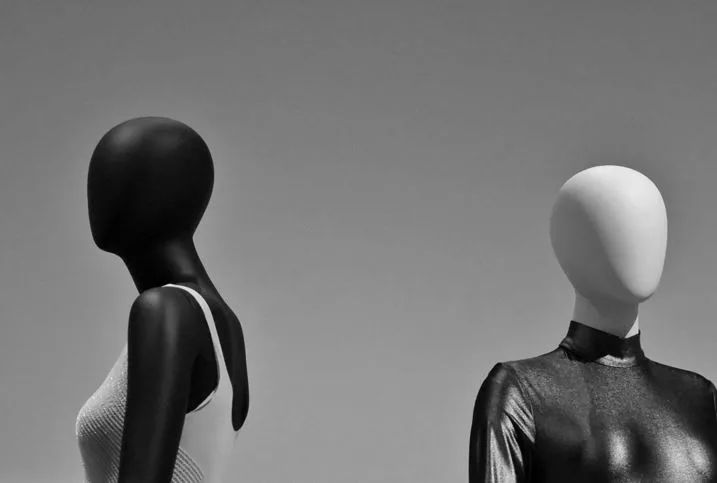Fashion & Identity: How What You Wear Hidden and Visible Reflects Self-Expression
When we think about fashion as self-expression, the conversation often focuses on what the world can see, a statement jacket, bold sneakers, or a tailored suit. Yet identity is also shaped by what we choose to wear underneath. Even private pieces, such as a men’s pride underwear collection, play a role in signaling confidence, comfort, and a sense of belonging. Fashion, whether hidden or visible, is ultimately a language through which we express who we are.
Clothing as Communication
Clothing has always communicated status, culture, and identity. From ceremonial garments to workplace uniforms, what we wear signals to others how we want to be perceived. Fashion is not just fabric and thread, it’s a social code.
A luxury watch may project success. A sports jersey can reveal loyalty. A rainbow pin may symbolize inclusivity. And even when no one else sees it, the underlayers we choose still influence how we present ourselves. Clothes are never neutral; they carry meaning.
The Psychology of Hidden Style
The phrase “dress for yourself” is often applied to outerwear, but it is even more relevant when we talk about hidden fashion. Undergarments, socks, and other unseen layers influence posture, mood, and confidence.
Studies in fashion psychology suggest that clothing impacts behavior, a phenomenon sometimes called enclothed cognition. When people wear garments that align with their values or self-perception, they perform tasks with greater confidence and assurance. For many, choosing underwear or base layers that affirm identity becomes a private yet powerful ritual.
Cultural Symbols Beneath the Surface
Hidden fashion often carries cultural and symbolic significance. For example, lingerie has long represented empowerment and sensuality in women’s fashion. In men’s fashion, bold underwear designs, pride collections, or sustainably made basics can symbolize values, communities, and movements.
Even if these pieces remain invisible to the outside world, they carry meaning for the wearer. They transform the simple act of getting dressed into a moment of affirmation.
Visibility, Inclusion, and Pride
In recent years, the fashion industry has increasingly embraced inclusivity, not only in marketing but in the actual design of collections. Pride collections, gender-neutral undergarments, and diverse sizing lines reflect the understanding that clothing is deeply tied to identity.
For LGBTQ+ communities especially, hidden fashion has become an arena of empowerment. Pride underwear collections or rainbow-accented basics go beyond functionality; they are symbols of visibility and acceptance. Even when worn privately, they connect the individual to a larger movement of pride and authenticity.
Everyday Fashion as Storytelling
Beyond cultural statements, everyday clothing choices tell stories about personality and priorities. A minimalist wardrobe may signal a preference for simplicity. Bright, patterned shirts may reveal a playful character. Footwear, accessories, and even fabrics speak volumes.
Hidden fashion tells its own story: comfort, sustainability, performance, sensuality. Whether someone invests in organic cotton base layers or bold designer underwear, the choices reflect personal values. Every layer contributes to the narrative we construct about ourselves.
Fashion Across Contexts
Context also shapes the meaning of clothing. A suit worn in a boardroom sends a different message than the same suit worn at an art gallery. Similarly, underwear designed with bold colors or pride motifs sends a different message in a private setting than it would on a runway.
What’s consistent is that clothing adapts to the contexts in which we live, work, leisure, intimacy, activism. By selecting pieces for each of these roles, we shape and reinforce the multiple identities we carry in daily life.
The Empowerment of Choice
At its core, fashion is about choice. Every morning, the act of selecting what to wear is also an act of self-definition. Do you prioritize comfort, style, or symbolism today? Will you choose something understated or bold?
Even when hidden from view, underwear or base layers represent autonomy over our bodies and presentation. Making deliberate choices in these areas affirms that fashion is not dictated only by outside trends, it’s personal, intimate, and empowering.
The Future of Fashion and Identity
Looking ahead, fashion’s relationship with identity will likely grow even more personal. Digital fashion, body-positive design, sustainable materials, and inclusive campaigns all signal a shift toward clothing that honors individuality.
As conversations around gender, inclusivity, and sustainability continue, hidden fashion will remain an essential part of this evolution. Intimates, base layers, and underwear are no longer afterthoughts; they’re becoming central to fashion’s dialogue on authenticity and representation.
Fashion is not just what the world sees on runways or sidewalks. It’s also the hidden choices that shape how we move, think, and feel. From bold jackets to pride-inspired underwear, every garment is part of the language of self-expression.
Whether visible to others or worn just for ourselves, clothing has the power to tell stories, affirm identity, and transform confidence. And perhaps that is the greatest secret of style: it begins beneath the surface.






